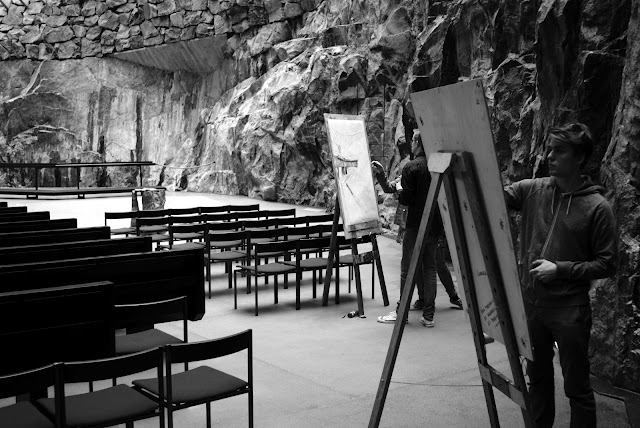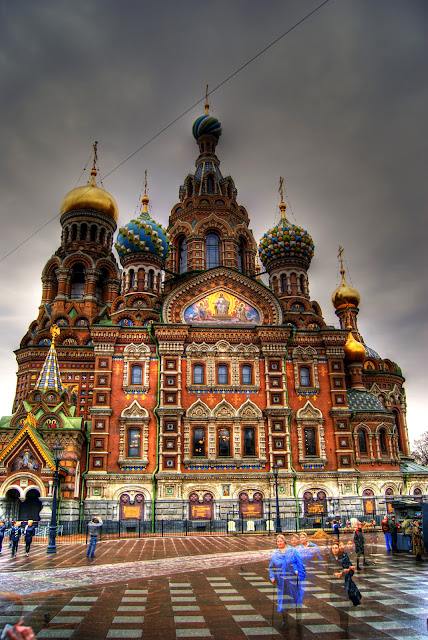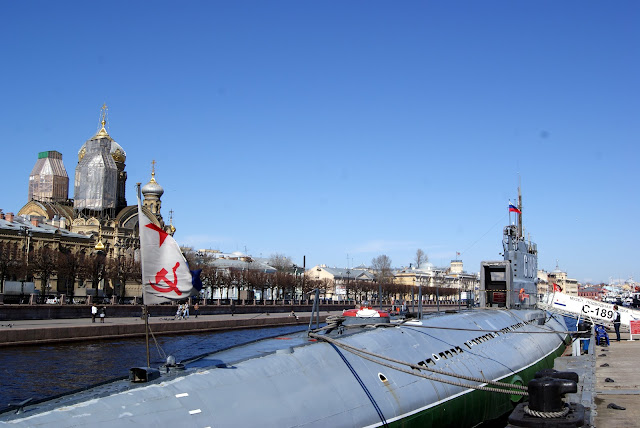This past week I traveled to Helsinki, Finland and St. Petersburg, Russia. This is a picture of the ferry that we took from Stockholm to Helsinki.
After exploring the ferry, I caught this photo on the top deck just before we departed from Stockholm.
After travelling through the night by ferry from Stockholm, we arrived in Helsinki, Finland early the next morning. After a short guided tour through the city we were left to explore the city on our own. This is a picture of the Helsinki Cathedral (Helsingin Tuomiokirkko). The church was originally built in 1830-1852 as a tribute to Nicholas I, the Tsar of Russia.
Another picture here of the Helsinki Cathedral.
Tram running through downtown Helsinki across from the Helsinki Cathedral.
Street musician across from Helsinki Central Station
While exploring downtown Helsinki, we stopped in a small cafe and had some Reindeer Wraps.
We then walked to Temppeliaukio Church (Temppeliaukion kirkko). The church was opened in 1969 and is an architectural phenomenon, built entirely into existing stone and rock. The church holds many concerts throughout the year due to its excellent acoustics.
Like most all of Scandanavia, Helsinki is well known for its design. There were several students from a Helsinki Design University inside the Temppeliaukio Church when we visited.
After relaxing and exploring a bit more of Helsinki, we boarded our ferry en route to St. Petersburg, Russia.
The ferry from Helsinki to St. Petersburg consisted mainly of Russian Nationals. We spent the evening having a few drinks and listening to Russian karaoke. We arrived in St. Petersburg early in the morning and after making it through border control we had a short bus tour through the city. This is a picture of downtown St. Petersburg. The river is called the Bolshaya Neva and you can see St. Isaac's Cathedral in the background.
One of the first things you notice when entering St. Petersburg are the two Spinx overlooking the city. Here is a picture of myself in front of one of the Spinx along the Bolshaya Neva.
We then visited the Russian Vodka Museum for free taste testing and a traditional Russian lunch.
Nothing like Vodka shots at 11:30 in the morning.
More Vodka shots....
A picture here of St. Isaac's Cathedral (Исаа́киевский Собо́р). St. Isaac's Cathedral is the largest Russian Orthodox Cathedral in the city. It is dedicated to Saint Isaac of Dalmatia, a patron saint of Peter the Great.
A picture here of one of the several canals that run through the city center near St. Issac's Cathedral.
This is the Church of the Savior on Spilled Blood (Храм Спаса на Крови). This Church was built on the site where Tsar Alexander II was assassinated and was dedicated in his memory.
The Church contains over 7500 square metres of mosaics—according to its restorers, more than any other church in the world. In the aftermath of the Russian Revolution, the church was ransacked and looted, badly damaging its interior. The Soviet government closed the church in the early 1930s. During the Second World War when many people were starving due to the Siege of Leningrad by Nazi German military forces, the church was used as a temporary morgue for those who died in combat and from starvation and illness.
One last picture of the Church of the Savior on Spilled Blood.
Street musicians outside the Church of the Savior on Spilled Blood.
We started our second day in St. Petersburg by visiting the State Hermitage Museum (Госуда́рственный эрмита́ж). One of the largest and oldest museums in the world, it was founded in 1764 by Catherine the Great and has been open to the public since 1852. Its collections, of which only a small part is on permanent display, comprise nearly 3 million items, including the largest collection of paintings in the world. St. Petersburg only sees 60 days of clear skies throughout the year. We were very lucky to catch one of them.
After spending a few hours in the State Hermitage Museum we went and grabbed some lunch on the other side of the city but not before seeing some Rockabilly street musicians playing a private show for this young man.
An old commemorative Russian Submarine was docked along the Bolshaya Neva. We had the chance to board the submarine and take a look inside.
A picture here of the St. Nicholas Naval Cathedral. The Russian Orthodox Church was originally built in 1762 as a marine regimental church.
Our next day in St. Petersburg we visited Catherine's Palace (Екатерининский дворец) about an hour outside of the city. Catherine's Palace was the Baroque summer residence of the Russian tsars.
More than 100 kilograms of gold were used to gild the sophisticated stucco façade and numerous statues erected on the roof. It was even rumoured that the palace's roof was constructed entirely of gold.
When the German forces retreated after the siege of Leningrad, they had the residence intentionally destroyed, leaving only the hollow shell of the palace behind. Prior to World War II, the Russian archivists managed to document a fair amount of the contents, which proved of great importance in reconstructing the palace.
Although the largest part of the reconstruction was completed by 2003, much work is still required to restore the palace to its former glory. In order to attract funds, the administration of the palace has leased the Grand Hall to such high-profile events as Elton John's concert for the elite audience in 2001 and the 2005 exclusive party which featured the likes of Bill Clinton, Tina Turner, Whitney Houston, Naomi Campbell, and Sting.
While driving back into St. Petersburg from Catherine's Palace we stopped at the Lenin Statue at the House of Soviets. The House of Soviets is the office building built in Stalinist style in the late 1930's.
The House of Soviets was planned to host the administration of the Soviet Leningrad government. In 1941, it was fortified and used as a local command post for the Soviet Red Army during the Siege of Leningrad.
We then headed back to our ferry and departed for Helsinki.
Our last day in Helsinki we took a 10 minute ferry ride to the fortress island of Suomenlinna. Sweden started building the fortress in 1748, when Finland was still a part of the Swedish kingdom.
The fortress became part of an independent Finland in 1917, following the Russian Revolution. After the Finnish Civil War, a prison camp existed on the island.
After leaving Suomenlinna and heading back to the mainland, downtown Helsinki, we stopped at the Harbor Market and had some fresh seafood for lunch.
A few hours later we boarded the ferry back to Stockholm and our trip came to an excellent close as the sunset fell across the Baltic Sea.





































Nice pictures!!
ReplyDeleteThankyou!!
DeleteI totally agree!
ReplyDelete(Y)
DeleteRob:
ReplyDeleteI have been enjoying your photos and living the experience through your eyes. What a life and wonderful journey. Can't wait to see you..be safe!
Uncle Gary
Thanks Gary! That really means a lot to me! I hope you are doing well and I am looking forward to seeing you soon too!
DeleteAwesome pictures Rob. This is Tom Dooher, Sam Dooher's brother. I'm just starting my journey down the road of blogging and photo journalism. I have started my own wordpress site for a New Media Strategies course and I hope to continue it after that ends. I'm always looking for inspiration for my next photography project, so I'll for sure stop back and check what you've been working on.
DeleteIt is right and doing good work. Thanks for sharing your nice information and the blog, please keep sharing........
ReplyDelete